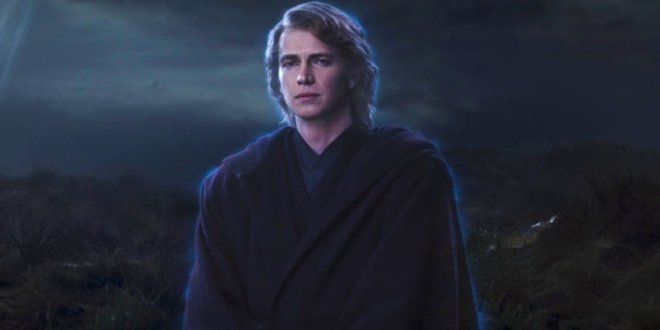
Summary
- Yoda's return in The Last Jedi as a Force ghost proves that there is no time limit for Force ghosts to expire, opening up intriguing possibilities for future Star Wars projects.
- The Last Jedi suggests Force ghosts are not bound by specific locations, as Yoda appears on both Endor and Ahch-To.
- Anakin Skywalker's appearance in Ahsoka confirms Force ghosts can appear and communicate with anyone, not just those they had connections with in life.
Some of Rian Johnson’s decisions in Star Wars: The Last Jedi may have divided Star Wars viewers, but the return of Yoda was welcomed by almost everyone. For the first time since The Phantom Menace, Frank Oz returned as puppeteer for the wise Jedi Master. Of course, Yoda’s CGI replacement in Attack of the Clones and Revenge of the Sith was necessary given the amount of stunts the character performed—which wouldn’t have been feasible for puppet Yoda to pull off. Yet having the puppet return in The Last Jedi rather than a CGI Yoda was a nostalgic throwback to Frank’s work on the original trilogy.
Yoda’s Force ghost returns almost exactly halfway into The Last Jedi, shortly before Luke Skywalker intends to burn down the uneti tree housing the sacred Jedi texts. And when Luke gets cold feet, Yoda steps in to summon a storm and burn the tree on his own—supposedly ending the Jedi once and for all. In reality, Rey secretly stole the Jedi texts before leaving Ahch-To, and Yoda likely knew this. But regardless of whether The Last Jedi decided to use CGI or a puppet, Yoda's return as a Force ghost has massive implications for the future of Star Wars.
Your browser does not support the video tag. The Last Jedi Suggested There's No Time Limit To Force Ghosts Close The fact Yoda returns to Luke as a Force ghost after being dead for 30 years proves there is no time limit for Force ghosts to expire or pass on. The few Jedi who learn how to retain their consciousness after death could technically persist forever if they chose to, which poses some intriguing ideas for future Star Wars projects. Additionally, Force ghosts do not seem bound to remain in the specific location they died, as Yoda appears on both Endor and Ahch-To. Similarly, Qui-Gon Jinn was the first person to become a Force ghost, and—years after his death—he appeared to Obi-Wan Kenobi on Tatooine.
Before hiring Frank Oz to bring Yoda to life in The Empire Strikes Back, George Lucas almost got a trained monkey to play Yoda.
The Rise of Skywalker also seems to support the idea that Jedi who have died still persist in the netherworld of Force for an incalculable amount of time. When Rey channels the power of all the Jedi to defeat Palpatine, Rey hears a myriad of past Jedi call to her in support. And despite many of them not having Force ghosts, she still clearly hears them. This, combined with the fact Yoda was able to manifest himself on Ahch-To at the exact point Luke was having a crisis of faith, suggests any Force ghost can show up at anytime in future Star Wars projects.
Ahsoka Confirmed Force Ghosts Can Appear To Strangers  The apparent limitlessness of Force ghosts has also been expanded by Anakin Skywalker’s appearance in the Ahsoka finale. Previously, it seemed as if Force ghosts tended to appear to the living they had connections with, such as when Obi-Wan Kenobi spoke to Luke at the end of A New Hope, or when Qui-Gon appeared to Obi-Wan in Obi-Wan Kenobi. But at the end of Ahsoka, Sabine Wren briefly senses Anakin’s presence through the Force. This means Force ghosts don’t necessarily need to return to the people they knew in life, as Sabine and Anakin had no connection to each other.
The apparent limitlessness of Force ghosts has also been expanded by Anakin Skywalker’s appearance in the Ahsoka finale. Previously, it seemed as if Force ghosts tended to appear to the living they had connections with, such as when Obi-Wan Kenobi spoke to Luke at the end of A New Hope, or when Qui-Gon appeared to Obi-Wan in Obi-Wan Kenobi. But at the end of Ahsoka, Sabine Wren briefly senses Anakin’s presence through the Force. This means Force ghosts don’t necessarily need to return to the people they knew in life, as Sabine and Anakin had no connection to each other.
It could be argued Anakin’s ghost was actually appearing to Ahsoka, and that Sabine was merely there to sense him at the right time and the right place. But given how Rey hears from Jedi she never met in The Rise of Skywalker, it seems more likely that Force ghosts can appear and talk to anyone they choose. Therefore, anyone who is Force-sensitive in Star Wars could theoretically be visited or guided by past Jedi who became Force ghosts.





